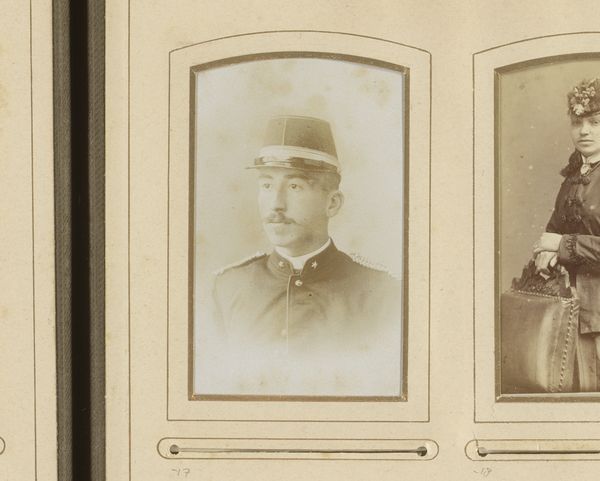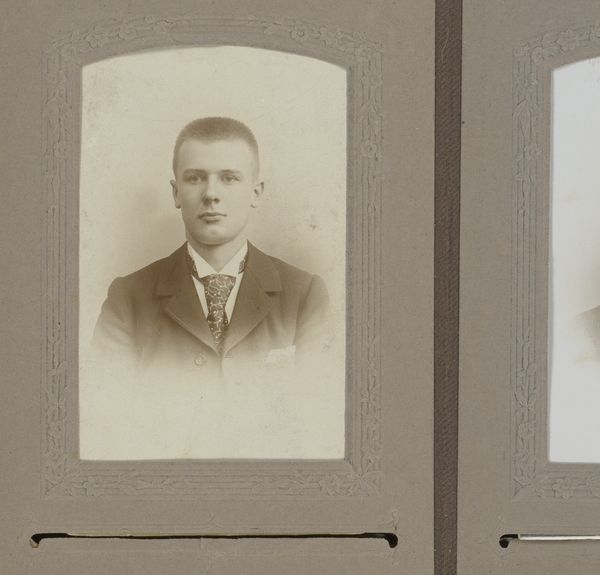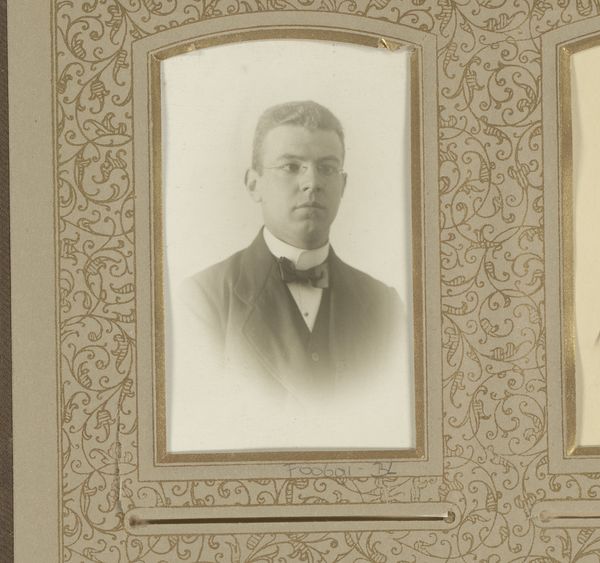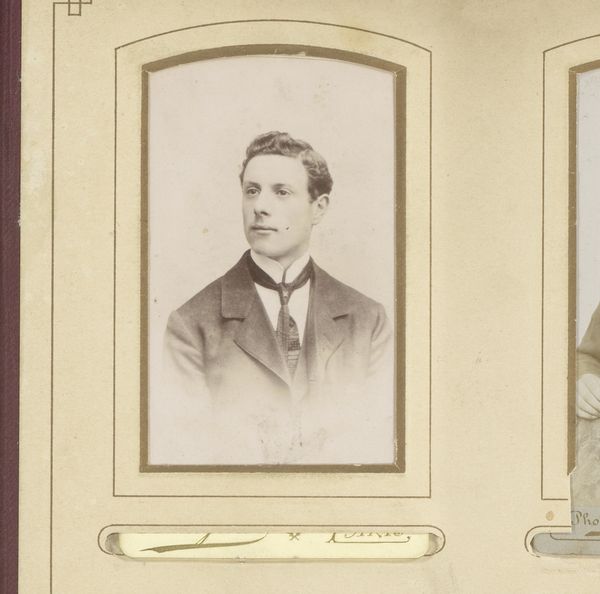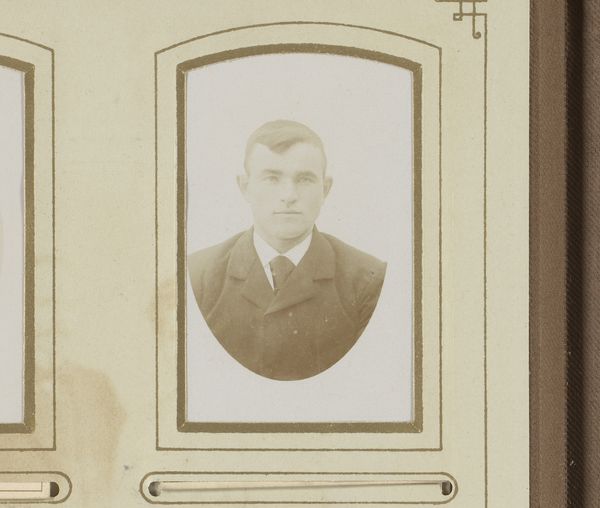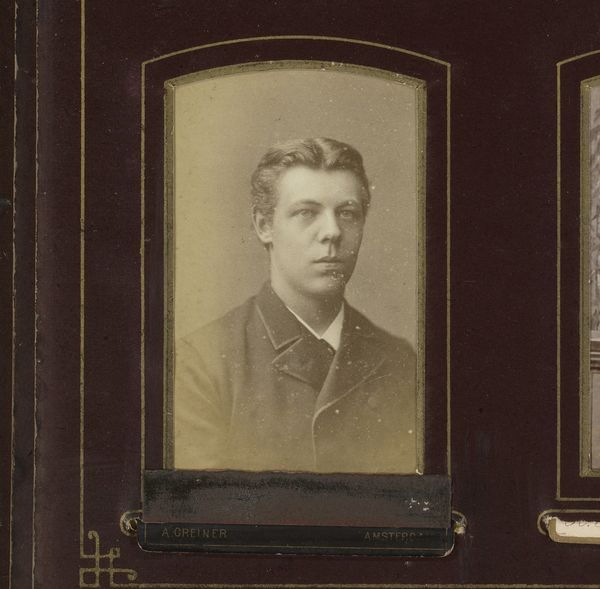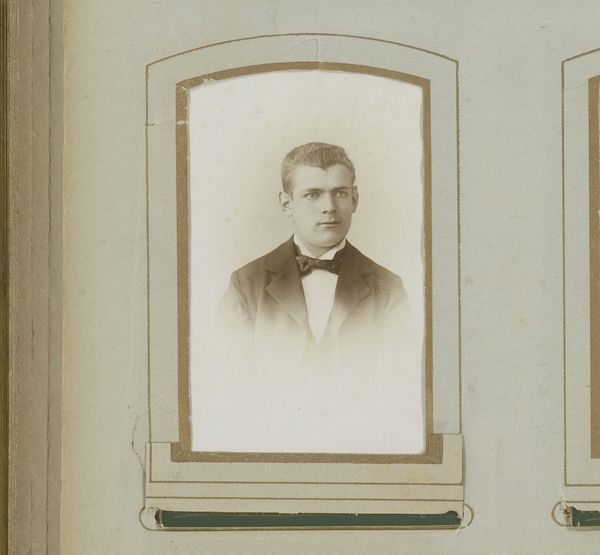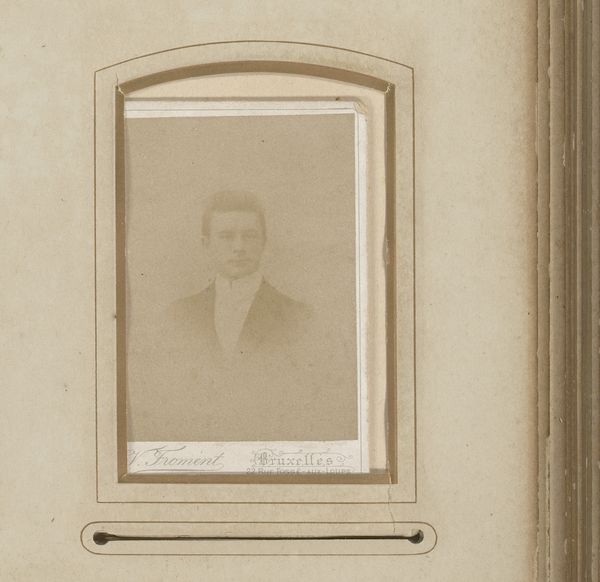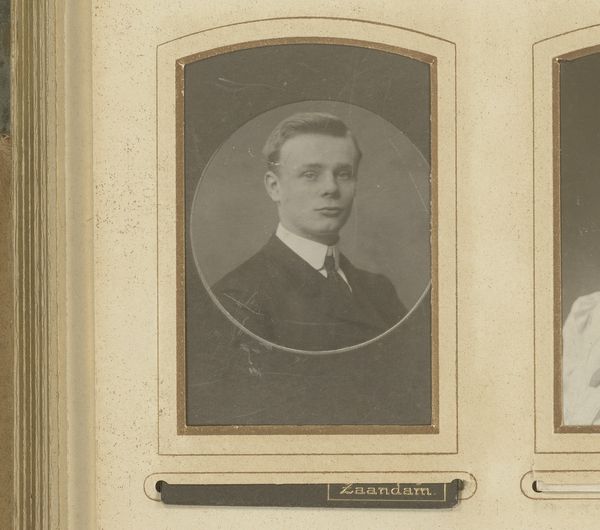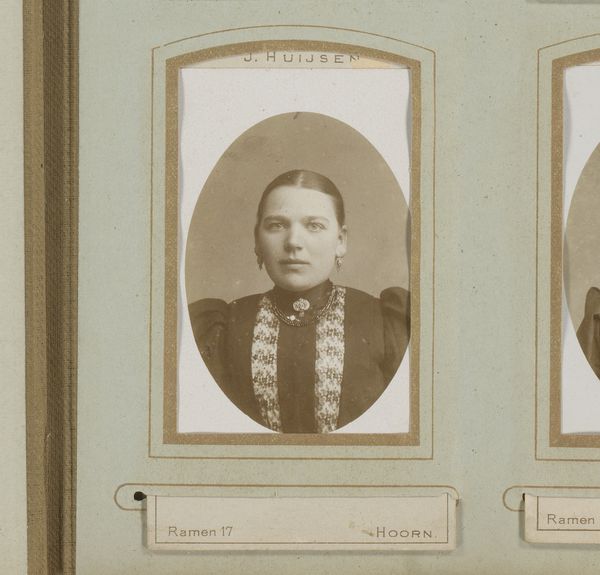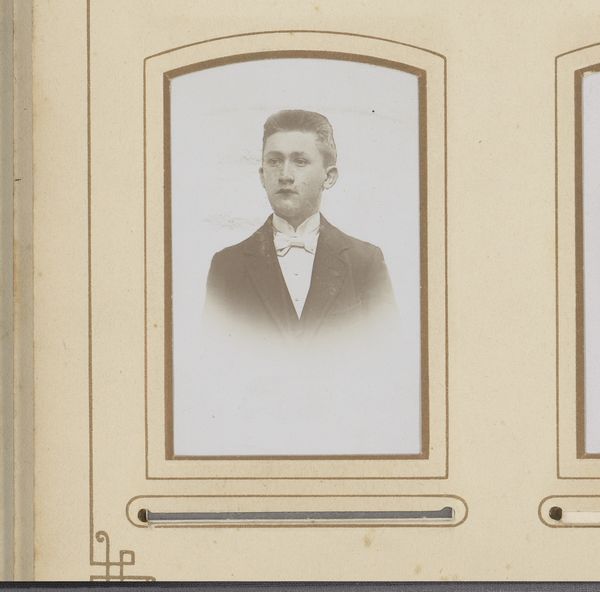
photography, albumen-print
#
portrait
#
surveyor photography
#
aged paper
#
toned paper
#
muted colour palette
#
photography
#
albumen-print
Dimensions: height 81 mm, width 50 mm
Copyright: Rijks Museum: Open Domain
Editor: So, here we have "Portret van een man," made between 1871 and 1891, by Gerrit Dirk Siewers, an albumen print. There’s such a solemn, almost severe feeling to this portrait, likely intended to project seriousness. What kind of cultural and social forces do you think shaped how someone like this man wanted to be seen and represented? Curator: That’s a great starting point. Think about the late 19th century. Photography was becoming increasingly accessible, yet portraiture still carried weight. The rising middle class often used photography to emulate the visual traditions of the elite, commissioning portraits to project respectability and status. Is there something particularly "modern" in his dress or gaze that hints at societal aspirations of the sitter? Editor: Well, his attire is fairly simple, but neat, and his direct gaze feels assertive, even for a modern viewer. Did photographic portraits like this help shape or solidify emerging social classes and identities in any way? Curator: Absolutely. These portraits functioned as visual documents of social mobility. They played a key role in constructing and communicating identity in a rapidly changing world. Galleries and studios became public spaces where these narratives were negotiated. Photography wasn't just reflecting society; it was actively participating in its construction. How do you think displaying photographs like this in public collections influences our interpretation of history today? Editor: It's fascinating to consider the role of archives in shaping historical memory! I guess it forces us to question whose stories get told and how. Curator: Exactly. And understanding the socio-political context of images like this one reminds us that art, in any form, is rarely neutral. It’s a reflection of the values, ambitions, and power dynamics of its time. Editor: That's a really insightful perspective; I hadn't considered the power dynamics embedded even in seemingly simple portraits. Thanks!
Comments
No comments
Be the first to comment and join the conversation on the ultimate creative platform.
